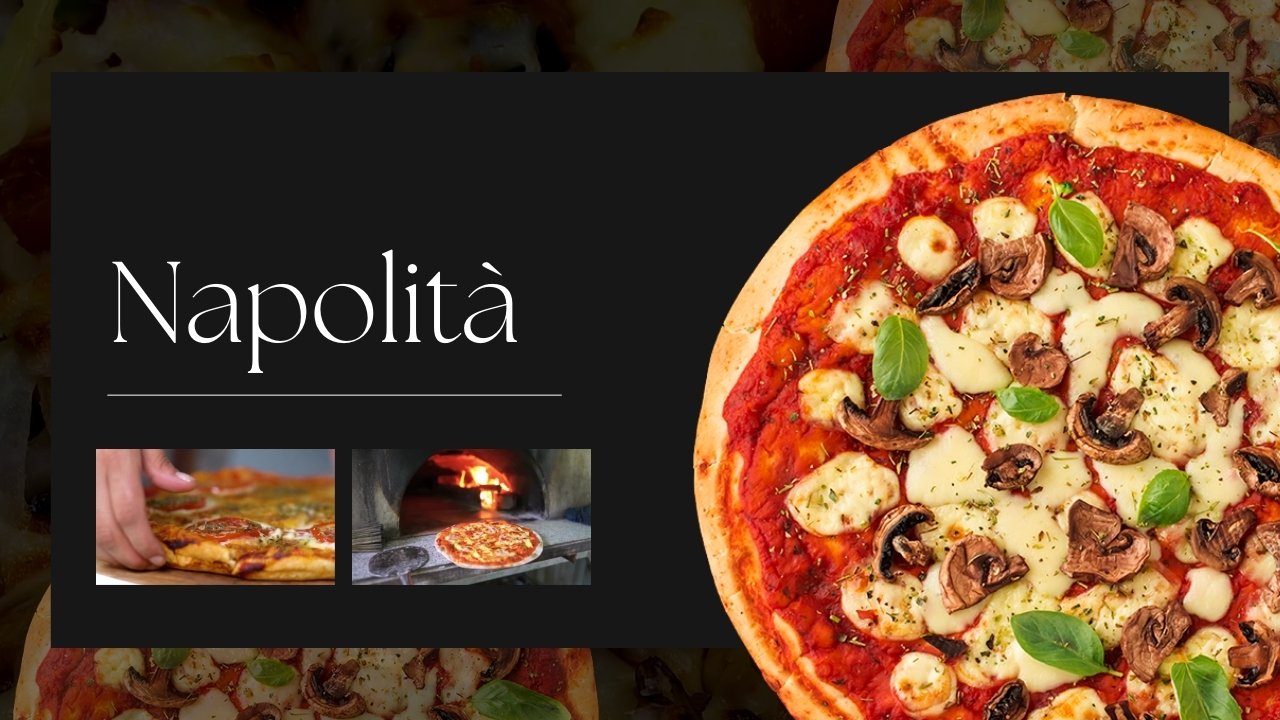Naples, often referred to by its Italian name “Napoli,” is one of the oldest continuously inhabited cities in the world, with a rich history that stretches back over 2,800 years. Nestled along the stunning coast of southern Italy, this vibrant city is not only a treasure trove of ancient architecture and culture but also a cornerstone of the culinary world. The cuisine of Naples, known as Napolità, has made indelible contributions to global gastronomy, with its influence extending far beyond Italy’s borders.
Napolità cuisine is a delightful blend of simple yet robust flavors, born from the fertile lands of Campania and influenced by centuries of cultural exchanges. From the iconic Margherita pizza to the humble yet utterly delicious sfogliatella, Napolità cuisine is a testament to the power of fresh ingredients and traditional cooking methods. This journey through taste aims to uncover the magic of Napolità, taking you on a culinary adventure that will leave your taste buds craving for more.
The History of Napolità Cuisine: From Origins to Modern Influences
Ancient Beginnings
Napolità cuisine has deep roots that trace back to ancient times. The Greeks, who established Naples as a colony in the 8th century BC, brought with them their culinary traditions, including the use of olive oil, wine, and a variety of vegetables and seafood. This early foundation was further enriched by the Romans, who introduced techniques such as bread baking and the fermentation of grapes into wine.
Medieval and Renaissance Influences
During the Middle Ages and the Renaissance, Naples became a melting pot of cultures due to its strategic location and the various ruling dynasties that controlled the city. The Angevin and Aragonese rulers, in particular, left a lasting impact on local cuisine by introducing ingredients and cooking styles from France and Spain. It was during this period that Naples saw the introduction of tomatoes, an essential ingredient in many Napolità dishes today, which were brought to Europe from the New World by Spanish explorers.
The Birth of Pizza
No exploration of Napolità cuisine would be complete without mentioning pizza. While flatbreads topped with various ingredients had existed in different forms throughout history, it was in Naples that the modern pizza as we know it today was born. In the late 18th century, the people of Naples started adding tomatoes to their flatbreads, giving rise to the iconic dish. The Margherita pizza, named in honor of Queen Margherita of Savoy, symbolizes the Italian flag with its red tomatoes, white mozzarella, and green basil.
Modern Day Influences
Today, Napolità cuisine continues to evolve while staying true to its roots. Chefs in Naples and beyond are experimenting with traditional recipes, incorporating contemporary techniques and international ingredients to create innovative dishes that still capture the essence of Napolità. This dynamic interplay between tradition and modernity is what makes Napolità cuisine so captivating and timeless.
Must-Try Dishes and Where to Find Them in Naples
Pizza Margherita
As mentioned earlier, Pizza Margherita is perhaps the most famous export of Napolità cuisine. To experience the best Margherita pizza, head to L’Antica Pizzeria da Michele, a historic pizzeria that has been serving up perfect pies since 1870. Their pizzas are simple, yet each bite is a symphony of flavors.
Spaghetti alle Vongole
This classic seafood pasta dish combines the briny sweetness of fresh clams with the richness of olive oil, garlic, and a hint of chili. For a taste of this Neapolitan favorite, visit Trattoria da Nennella, a beloved local eatery renowned for its authentic and hearty dishes.
Sfogliatella
Sfogliatella, a type of shell-shaped pastry filled with sweet ricotta, semolina, and flavored with orange zest, is a must-try for any visitor to Naples. Head to Pasticceria Attanasio, a bakery famous for its fresh, crispy sfogliatelle that melt in your mouth.
Parmigiana di Melanzane
This comforting dish layers slices of fried eggplant with rich tomato sauce, mozzarella, and Parmesan cheese, all baked to perfection. Ristorante Mattozzi, located in the historic center of Naples, offers a traditional take on this beloved dish.
Ragu Napoletano
Unlike its Bolognese cousin, Ragu Napoletano is a slow-cooked tomato sauce made with chunks of beef and pork, typically served with pasta. Trattoria Malinconico, a family-run restaurant, serves up a ragu that captures the heart and soul of Napolità cuisine.
Exploring Traditional Napolità Pizzerias and Their Impact on Global Pizza Culture
The Origin Story
Naples is widely regarded as the birthplace of the modern pizza, and its pizzerias have played a significant role in shaping global pizza culture. Traditional Napolità pizzerias, known for their wood-fired ovens and high-quality ingredients, adhere to strict guidelines to ensure authenticity. The Associazione Verace Pizza Napoletana (AVPN) sets standards for true Neapolitan pizza, such as the use of specific types of flour, tomatoes, and mozzarella.
Iconic Pizzerias
L’Antica Pizzeria da Michele
As mentioned earlier, L’Antica Pizzeria da Michele is a must-visit for any pizza lover. Their minimalist approach, focusing on just two types of pizza—Margherita and Marinara—exemplifies the “less is more” philosophy that is central to Napolità cuisine.
Pizzeria Brandi
Another iconic pizzeria, Pizzeria Brandi, is where the Margherita pizza is said to have been invented in 1889. This historic establishment continues to serve pizzas that honor the legacy of their original creation.
Sorbillo
Sorbillo is a beloved pizzeria that has gained international acclaim for its commitment to quality and innovation. The owner, Gino Sorbillo, is a well-known figure in the pizza world, and his pizzeria offers a wide variety of creative toppings while staying true to Napolità traditions.
Global Influence
The influence of Napolità pizzerias extends far beyond Naples, with Neapolitan-style pizzerias popping up in cities around the world. The emphasis on fresh, high-quality ingredients and traditional cooking methods has inspired a new generation of pizza makers who strive to bring a taste of Naples to their local communities.
Uncovering the Local Food Markets: A Feast for the Senses
Mercato di Porta Nolana
One of the most vibrant markets in Naples, Mercato di Porta Nolana, offers a sensory overload with its colorful displays of fresh produce, seafood, meats, and cheeses. This bustling market is a great place to experience the raw energy of Napolità culinary culture and to pick up some local ingredients for your own cooking adventures.
Pignasecca Market
Located in the Spanish Quarter, Pignasecca Market is the oldest street market in Naples. Here, you’ll find an array of food stalls selling everything from fresh fruits and vegetables to cured meats and artisanal cheeses. Don’t miss the chance to try some freshly made arancini (rice balls) or a slice of pizza fritta (fried pizza).
Mercato di Antignano
Situated in the Vomero district, Mercato di Antignano is a popular market among locals. This market is known for its high-quality produce, fresh seafood, and a variety of specialty foods. It’s an excellent spot to sample local delicacies and to get a feel for the daily life of Neapolitans.
Tips for Navigating the Markets
Go Early: Arriving early ensures you get the freshest produce and avoids the midday crowds.
Learn Some Italian: Knowing a few basic Italian phrases can go a long way in enhancing your shopping experience and building rapport with vendors.
Bring Cash: Many market stalls do not accept credit cards, so it’s a good idea to carry cash.
Be Adventurous: Don’t be afraid to try unfamiliar foods. The markets are a great place to discover new flavors and ingredients.
Napolità Beyond the Plate: Cultural and Historical Landmarks to Visit
Pompeii
A short drive from Naples, the ancient city of Pompeii offers a fascinating glimpse into life as it was before the catastrophic eruption of Mount Vesuvius in 79 AD. The well-preserved ruins include villas, temples, and the famous amphitheater, making it a must-visit for history enthusiasts.
Castel dell’Ovo
Overlooking the Gulf of Naples, Castel dell’Ovo is the oldest standing fortification in the city. This impressive castle offers stunning views of the coastline and a rich history that dates back to Roman times. It’s a great place to explore while enjoying the sea breeze.
Spaccanapoli
Spaccanapoli, which translates to “Naples splitter,” is a long, narrow street that cuts through the historic center of Naples. Lined with churches, shops, and cafes, this bustling street is the heart of the city and a perfect place to soak in the local atmosphere.
The Naples National Archaeological Museum
Home to one of the most extensive collections of Greco-Roman artifacts in the world, the Naples National Archaeological Museum is a treasure trove of historical and artistic wonders. Highlights include the Farnese Bull, the Alexander Mosaic, and numerous statues and frescoes from Pompeii and Herculaneum.
The Cloister of Santa Chiara
The Monastery of Santa Chiara, with its stunning cloister adorned with colorful majolica tiles, offers a peaceful retreat from the hustle and bustle of the city. The adjacent museum provides insight into the history and significance of this beautiful complex.
Tips for Planning Your Culinary Adventure in Naples
Research and Plan Ahead
Before embarking on your culinary adventure, take some time to research the best restaurants, markets, and food tours in Naples. Having a rough itinerary can help you make the most of your trip and ensure you don’t miss out on any must-try experiences.
Book Reservations
Many of the top restaurants and pizzerias in Naples can get quite busy, especially during peak tourist seasons. To avoid disappointment, it’s a good idea to make reservations in advance.
Take a Cooking Class
One of the best ways to immerse yourself in Napolità cuisine is to take a cooking class. Many local chefs and culinary schools offer classes where you can learn to make traditional dishes like pizza, pasta, and pastries. It’s a fun and hands-on way to deepen your appreciation for the local food culture.
Explore Beyond the Tourist Areas
While the historic center of Naples has plenty to offer, don’t be afraid to venture off the beaten path. Exploring neighborhoods like Vomero, Chiaia, and the Spanish Quarter can lead to unexpected culinary discoveries and provide a more authentic experience of the city.
Stay Flexible
While planning is important, it’s also crucial to stay flexible and go with the flow. Some of the best culinary experiences can come from spontaneous decisions and recommendations from locals. Be open to trying new things and adjusting your plans as you go.
You May Also Like: Delight in Pollaste: A Symphony of Spices and Freshness
Conclusion:
Naples, with its rich history, vibrant culture, and unparalleled culinary traditions, is a city that captivates the hearts and taste buds of all who visit. The journey through Napolità cuisine is a testament to the power of simplicity, quality ingredients, and time-honored techniques. From the iconic pizzas and pastas to the bustling markets and historic landmarks, Naples offers a feast for the senses that leaves a lasting impression.
As you embark on your own culinary adventure through Naples, remember to savor each moment and embrace the spirit of exploration. Whether you’re a seasoned foodie or a curious traveler, the flavors and experiences of Napolità are sure to inspire and delight.
So pack your bags, bring your appetite, and get ready to discover the irresistible charm of Napolità a journey through taste that you’ll treasure forever. Buon viaggio e buon appetito!
Frequently Asked Questions
What are the best markets to visit in Naples for fresh produce?
The best markets to visit in Naples for fresh produce are Mercato di Porta Nolana, known for its vibrant stalls selling fresh fruits and vegetables, cured meats, and artisanal cheeses, and Mercato di Antignano in the Vomero district, recognized for its high-quality produce and fresh seafood.
Which historical landmarks should I not miss in Naples?
Must-visit historical landmarks in Naples include Pompeii, the ancient city offering a glimpse into life before the eruption of Mount Vesuvius; Castel dell’Ovo, the oldest standing fortification with stunning coastal views; Spaccanapoli, a bustling street in the historic center; the Naples National Archaeological Museum, home to extensive Greco-Roman artifacts; and the Cloister of Santa Chiara, known for its beautiful majolica tiles and tranquil atmosphere.
How can I make the most of my culinary adventure in Naples?
To make the most of your culinary adventure in Naples, you should research and plan ahead, make reservations at popular restaurants, take a cooking class to learn traditional dishes, explore beyond tourist areas for authentic experiences, and stay flexible to embrace spontaneous opportunities and local recommendations.
What are some tips for navigating Neapolitan markets?
Key tips for navigating Neapolitan markets include going early for the freshest produce and avoiding crowds, learning basic Italian phrases to enhance interactions, bringing cash since many stalls don’t accept credit cards, and being adventurous to try new and unfamiliar foods.
Why is Naples renowned for its culinary traditions?
Naples is renowned for its culinary traditions due to its emphasis on simplicity, quality ingredients, and time-honored techniques. The city is famous for iconic dishes like pizza and pasta, its vibrant markets, and its rich history and culture, all of which contribute to a unique and delightful gastronomic experience.











